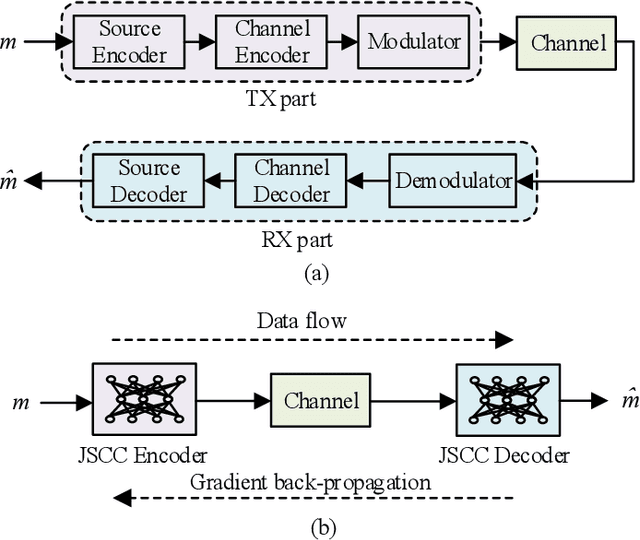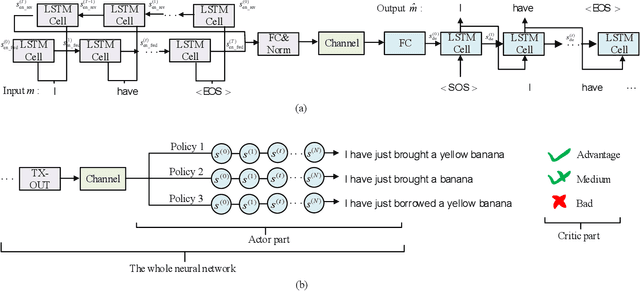Reinforcement Learning-powered Semantic Communication via Semantic Similarity
Paper and Code
Aug 27, 2021



We introduce a new semantic communication mechanism, whose key idea is to preserve the semantic information instead of strictly securing the bit-level precision. Starting by analyzing the defects of existing joint source channel coding (JSCC) methods, we show that the commonly used bit-level metrics are vulnerable of catching important semantic meaning and structures. To address this problem, we take advantage of learning from semantic similarity, instead of relying on conventional paired bit-level supervisions like cross entropy and bit error rate. However, to develop such a semantic communication system is indeed a nontrivial task, considering the nondifferentiability of most semantic metrics as well as the instability from noisy channels. To further resolve these issues, we put forward a reinforcement learning (RL)-based solution which allows us to simultaneously optimize any user-defined semantic measurement by using the policy gradient technique, and to interact with the surrounding noisy environment in a natural way. We have testified the proposed method in the challenging European-parliament dataset. Experiments on both AWGN and phase-invariant fading channel have confirmed the superiority of our method in revealing the semantic meanings, and better handling the channel noise especially in low-SNR situations. Apart from the experimental results, we further provide an indepth look at how the semantics model behaves, along with its superb generalization ability in real-life examples. As a brand new method in learning-based JSCC tasks, we also exemplify an RL-based image transmission paradigm, both to prove the generalization ability, and to leave this new topic for future discussion.
 Add to Chrome
Add to Chrome Add to Firefox
Add to Firefox Add to Edge
Add to Edge